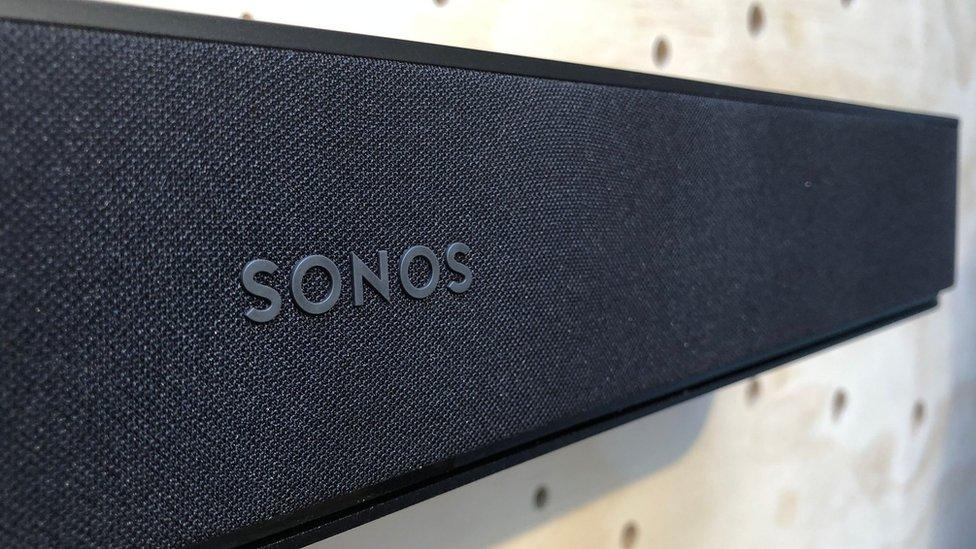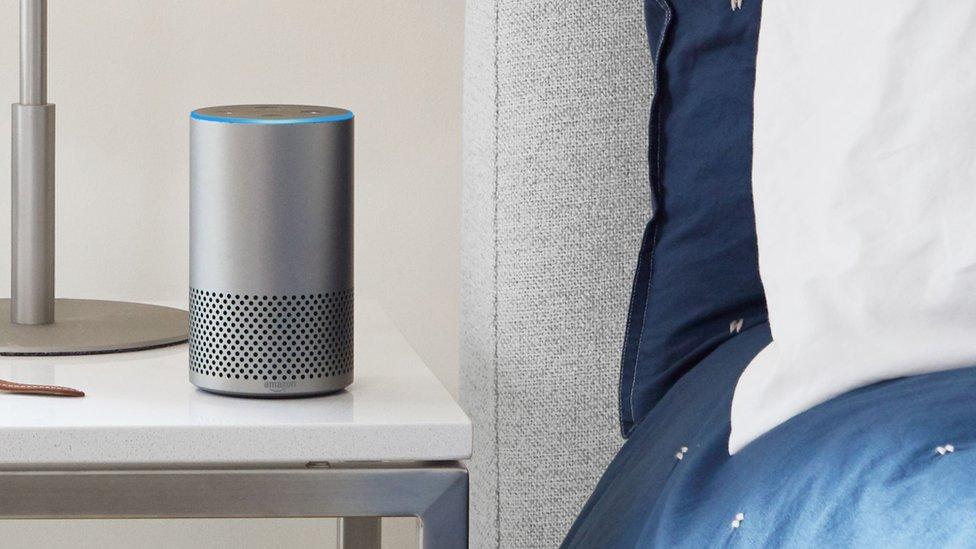Sonos makes Siri be friends with Alexa
- Published
- comments

The new Sonos Beam soundbar is 60% smaller than previous versions
Premium speaker maker Sonos is expected to float on the markets later this year - but if it's going to do well, the company will need to prove to investors why it has staying power.
That's becoming more difficult as some of the tech giants such as Amazon, Apple and Google start creating their own hardware, complete with voice assistants offering "smart" capabilities beyond what Sonos - first and foremost an audio specialist - can manage.
Lacking an assistant of its own, or a music streaming service, Sonos has sought to be an open platform that works with every major music streaming service.
Now that compatibility is being extended to voice assistants too.
The Sonos Beam, launched on Wednesday at an event in San Francisco, is the closest thing yet to a multi-voice assistant device.
That means you'll be able to pick and choose which of the major voice assistants you want to interact with for certain tasks.
The Beam - $399 when it goes on sale later this year - will support Siri, via your Apple device, and Amazon's Alexa is built-in. At some point this year it will also support Google Assistant.
The downside: the Beam won't really do much itself. You'll still need extra devices, or a capable smart TV, to access services such as Netflix or Amazon Prime Video.
Amazon Alexa heard and sent private chat
Amazon promises fix for creepy Alexa laugh
Why would you want all of these in the same device? Sonos sees it as future-proofing. Unlike our smartphones, which are updated as frequently as once a year, the hardware in our living rooms - your TV, mainly - lives on for much longer.
By aiming to support everything that comes along, Sonos is banking on the Beam being a device that appeals to those who are hesitant about buying into voice control.

Amazon's Alexa assistant scared some users with creepy laughter earlier this year
"You don't have to worry about what voice system you're already using," suggested Gartner analyst Brian Blau, who was at the event.
"Or, if you're new to voice assistants, you can pick any one that you want to use and go forward with it - it has that kind of flexibility."
In practice, it also means a bit of interoperability between the voices that until now have existed entirely in their own worlds.
On stage, Sonos demonstrated using Siri to prompt the sound system to play a song, and then later it was possible to ask Alexa what song was playing.
That may not prompt you to run out and buy one, but the bigger picture here is that it's probably healthy to live in a world where our connected devices can work together - even if it is just for basic tasks.
For consumers, it removes a big element of risk when picking products for your home. The more open they are, the longer they're likely to remain useful.
- Published24 May 2018
- Published7 March 2018